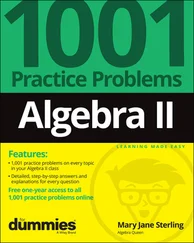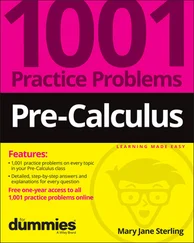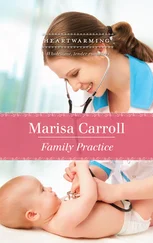Overall, there are critical pathways to taking unhealthy risks during phases of a pandemic disaster. Mental health practitioners are trained in distinguishing healthy risk-taking (e.g., asking the boss for a raise, trying out for the soccer team) from unhealthy risk-taking (e.g., using drugs and alcohol excessively, having unprotected sex, practicing poor virus hygiene). It is critical to recognize and understand the unique risk-taking behaviors of persons transitioning through phases of a pandemic disaster.
Resiliency is often described as the capacity to adjust to difficult life situations. It is closely aligned with the construct of coping, in which individuals attempt to protect themselves from a psychologically distressing event. A new science emerged in counseling and psychology beginning in the early 1970s that uses a biopsychosocial approach to discover a person’s resiliency and coping characteristics after exposure to trauma. The literature is robust, and researchers suggest that persons who are more stress hardy and stress resistant have a greater capacity for empathy and possess better overall health and wellness. These individuals enjoy what Siebert (2005) referred to as the “resiliency advantage,” which comprises eight factors: making a conscious choice in life, harnessing the power of positive thinking, taking responsibility, having an internal locus of control, being self-motivated, not being afraid to try out new and different things, taking control of one’s life, and practicing positive approaches in life. Positive psychology and complementary, integrative, and behavioral health care strategies have had a significant influence on resiliency programs in the disaster mental health response (Stebnicki, 2017).
The intention of accelerating resiliency programs during disaster mental health response improves medical, physical, and mental health conditions. Resiliency programs overall have the potential to empower individuals by affecting positive change within the family system and promoting the practice of self-care. The early contributions of clinical researchers in resiliency psychology identify why some individuals are more stress hardy than others. There are excellent resiliency models to choose from that provide guidance on integrating resiliency strategies into evidence-based practices for individuals struggling with stress, trauma, and disaster-related mental health symptoms.
Mental, Behavioral, Psychosocial, Medical/Physical Health as They Apply to the PRRC Theoretical Model
The PRRC theoretical model proposed here is useful for evaluating a variety of mental, behavioral, and psychosocial health risk and resiliency characteristics as they relate to the COVID-19 pandemic. Pfefferbaum and North (2020) suggested that most COVID-19 cases are treated in health care settings by medical professionals who have little or no training in the assessment, diagnosis, and treatment of psychiatric and psychosocial conditions. Thus, education and training regarding the screening of mental, behavioral, and psychosocial health issues would enhance patients’ overall medical, physical, and mental health.
Although reliable and valid self-assessments exist for clinically diagnosing anxiety, depression, posttraumatic stress, and substance use disorders, the unique characteristics and measurement of the psychological distress experienced during a public health crisis such as COVID-19 have not yet been identified in the literature (Feng et al., 2020). A preliminary scale, the COVID-19 Related Psychological Distress scale, is under development by Feng and associates (2020) to measure psychological distress due to the COVID-19 pandemic in healthy individuals. Feng et al.’s paper presents a scientific review and discussion of this instrument.
The intent of the PRRC theoretical model in this early stage of development is to provide a global theoretical measure of a person’s experience of risk and resiliency during the phases of the COVID-19 pandemic disaster. Risk and resiliency are measured within the core areas of mental, behavioral, and psychosocial health with implications for medical and physical functioning. The psychological distress caused by pandemic viruses and its implications for mental and behavioral health practice is a unique area of study in disaster mental health response. This distinctive area involves a constellation of psychologi cal states, traits, behaviors, and other factors that range from daily stressors to extraordinary stressful and traumatic events.
At this point in the development of the PRRC model, it is difficult to determine universal traits or states of mental, behavioral, and psychosocial health in response to a pandemic disaster. However, core characteristics of the COVID-19 disaster may be similar to the mental, behavioral, and psychosocial characteristics of other natural pandemic disasters, such as the HIV/AIDS epidemic in 1981, severe acute respiratory syndrome in 2003, and Middle East respiratory syndrome in 2012. The worry is that anxiety, stress, mood, and other mental health disorders have become traits of the COVID Generation (Hategan & Abdurrahman, 2020; Zvolensky et al., 2020). In other words, critical life events that occurred throughout 2020 have created stressors that have increased mental health symptoms for a new normal in mental health functioning among the general population. Chronic and persistent coronavirus stress may be difficult to distinguish from pathological traits and states of stress. Thus, theoretical models of risk and resiliency factors are vital for discovering predictors of vulnerable populations during the COVID-19 pandemic disaster (Chen & Bonanno, 2020). These unique mental, behavioral, and psychosocial health characteristics are explored and described throughout Counseling Practice During Phases of a Pandemic Virus . Here, I offer the following definitions of mental, behavioral, psychosocial, and medical/ physical health as a preliminary means of explaining the general categories in the PRRC theoretical model.
The PRRC uses the diagnostic criteria and clinical characteristics reflected in the American Psychiatric Association’s (2013) Diagnostic and Statistical Manual of Mental Disorders (5th ed.). This will assist mental health and allied helping practitioners in recognizing, identifying, and assessing critical areas of concern with the intention to initiate case formulation and treatment planning. As noted in many structured assessments of mental health, various physiological characteristics, neurocognitions, thoughts, feelings, emotions, behaviors, and experiences make up the list of symptoms and conditions that are clinically significant. In addition, each diagnostic category considers features in its evaluation of mental health conditions such as development and course, risk and prognostic factors, cultural implications, diagnostic markers, differential diagnosis, and comorbidity.
The PRRC recognizes the importance of behavioral health as shaped by learning, cognitions, observable actions, emotions, and sociocultural factors. Behavioral health in the PRRC theoretical model primarily focuses on current behaviors in the here and now. Central to behavioral health is the contribution of wellness theories that describe healthy human functioning in multiple life areas. A basic assumption in behavioral health is that people can change, modify, attenuate, mitigate, and anticipate a range of behaviors that impact healthy medical, physical, psychological, psychosocial, occupational, and spiritual health and overall functioning.
Psychosocial health involves a complex interplay of adjustment and adaptation as they relate to an individual’s medical, physical, psychological, social, emotional, spiritual, educational, career/vocational, and environmental health. Individuals’ collective experiences of adjustment and adaptation vary with regard to attitude and perception, residual functional capacity, preexisting conditions and experiences, and coping and resiliency that manifest during phases of psychosocial adjustment and adaptation.
Читать дальше












